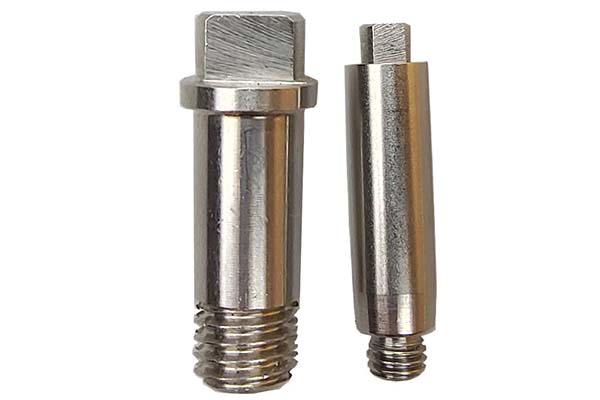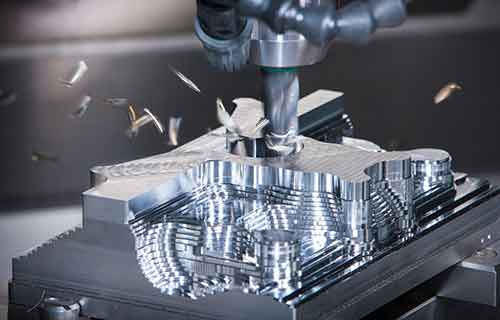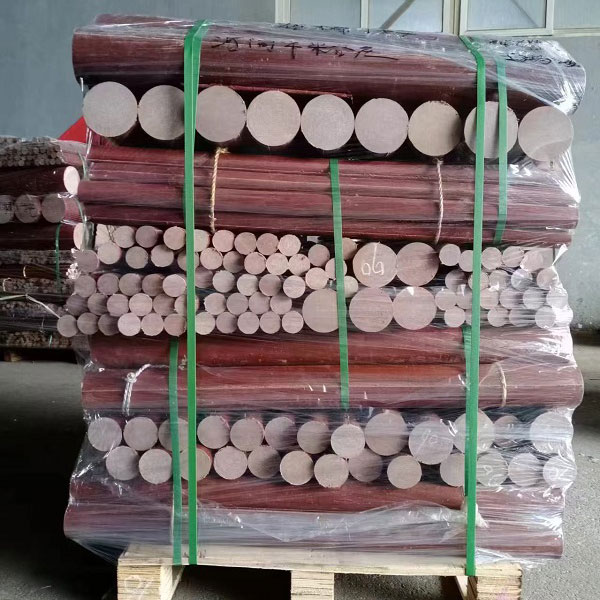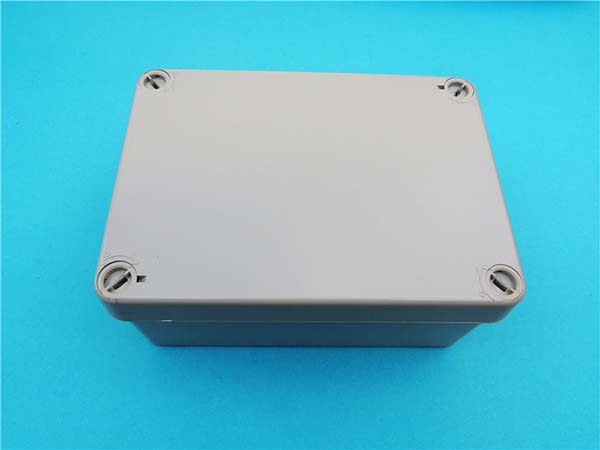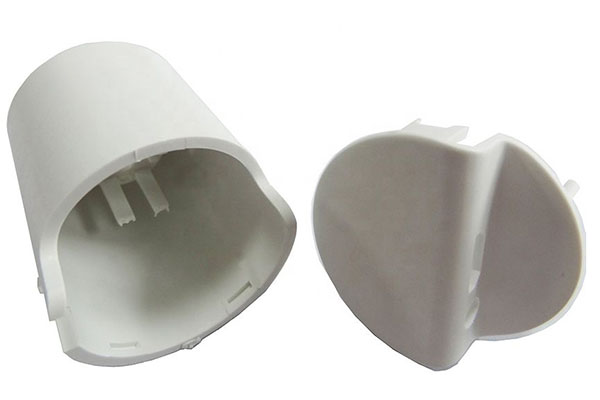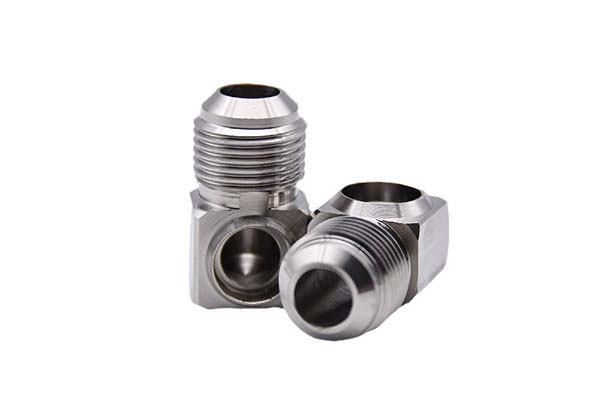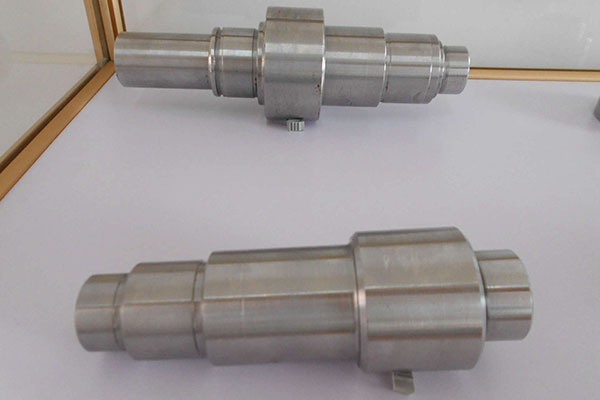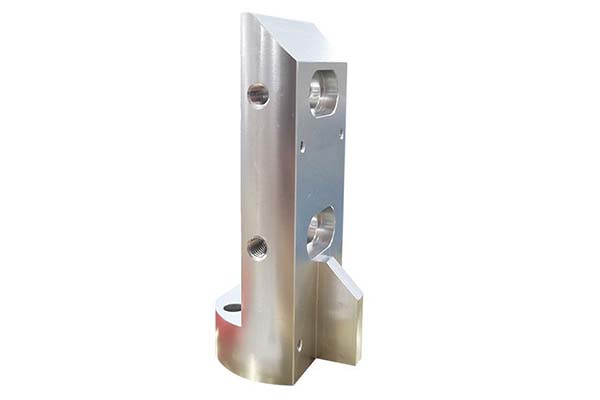Understanding Large CNC Services
Large CNC (Computer Numerical Control) services represent a cornerstone in modern manufacturing, offering a blend of precision, efficiency, and versatility that is indispensable for a wide range of industries. At its core, CNC machining is a subtractive manufacturing process where pre-programmed computer software dictates the movement of factory tools and machinery. In the context of large CNC services, this process is scaled up to handle substantial workpieces, often with dimensions that far exceed those of traditional machining operations.
The Basics of Large CNC Machining
Large CNC machining involves the use of colossal machines equipped with powerful spindles and robust axes capable of moving heavy cutting tools with extreme accuracy. These machines are designed to work on materials such as large blocks of metal (including steel, aluminum, and titanium), high - density plastics, and even composite materials. For Yigu Technology example, a large - scale CNC milling machine might have a work envelope of several meters in length, width, and height, allowing it to create components like large engine parts for ships or aircraft structural elements.
The programming aspect of large CNC services is highly specialized. Skilled programmers use Computer - Aided Design (CAD) and Computer - Aided Manufacturing (CAM) software to create detailed 3D models of the desired parts. These models are then translated into G - code, which the CNC machine reads to execute the precise cutting, drilling, and shaping operations. The level of precision achievable is remarkable, often in the range of micrometers, ensuring that the final product meets the strictest engineering specifications.
Importance in the Manufacturing Landscape
Aerospace Industry: In aerospace, large CNC services are crucial for manufacturing components like aircraft wings, fuselage sections, and engine casings. The need for lightweight yet incredibly strong parts made from advanced materials such as titanium alloys demands the high - precision capabilities of large CNC machines. For instance, a single aircraft wing spar, which can be several meters long, must be machined with utmost accuracy to ensure the structural integrity and aerodynamic performance of the aircraft. Any deviation in the manufacturing process could lead to catastrophic consequences during flight.
Marine Industry: The marine industry relies on large CNC services for the production of ship propellers, engine blocks, and hull components. Ship propellers, in particular, require complex geometries to optimize thrust and efficiency. Large - scale CNC machining allows for the precise shaping of these propellers from high - strength metals, ensuring smooth operation and reduced fuel consumption. A study by a leading marine research institute found that ships with precisely machined propellers using large CNC services experienced a 10 - 15% increase in fuel efficiency compared to those with less accurately produced propellers.
Energy Sector: In the energy sector, large CNC services play a vital role in manufacturing components for power generation equipment. For Yigu Technology example, in the production of wind turbine blades, which can be over 80 meters long, CNC machining is used to create molds with the exact shape and surface finish required. This ensures that the blades are aerodynamically efficient and can withstand the harsh environmental conditions they are exposed to. Similarly, for components in nuclear power plants, the high - precision machining capabilities of large CNC services are essential to meet the strict safety and quality standards.
In summary, large CNC services are not just a manufacturing option; they are a necessity for industries that require the production of large - scale, high - precision components. Their ability to handle complex geometries, work with a variety of materials, and meet tight tolerances makes them an integral part of modern manufacturing, driving innovation and progress in some of the most critical sectors of the global economy.
Advantages of Large CNC Services
Unparalleled Precision
Large CNC services are renowned for their ability to achieve micron - level precision. In the aerospace industry, for Yigu Technology example, components such as turbine blades for jet engines require extremely tight tolerances. These blades, which are subject to high temperatures and rotational forces during flight, must be machined with an accuracy of within a few micrometers. A study by an aerospace research center found that large CNC - machined turbine blades showed a 20% improvement in efficiency compared to those with slightly lower precision, due to the optimized aerodynamic shape achieved through high - precision machining.
In the medical equipment field, large CNC services are used to manufacture components for MRI machines, X - ray equipment, and surgical robots. The gantry structures of MRI machines, which need to be precisely shaped to ensure the accurate alignment of magnetic fields, are produced with the help of large CNC machining. The precision of these components is crucial as it directly impacts the quality of medical imaging and the effectiveness of surgical procedures.
Exceptional Consistency
When compared to traditional manual machining, CNC - controlled large - scale production offers a significant advantage in terms of consistency. In a large - scale manufacturing scenario, such as the production of large - sized valves for the oil and gas industry, each valve must be identical in dimensions and performance. A leading oil and gas equipment manufacturer reported that after switching to large CNC services for valve production, the rejection rate due to dimensional variations decreased from 15% in traditional manual production to less than 3% in CNC - based production. This high level of consistency not only improves product quality but also reduces waste and production costs associated with rework.
High - level Automation
The high - level automation of large CNC services is a game - changer in modern manufacturing. These machines can operate continuously for long periods, with minimal human intervention. For instance, in the production of large aluminum extrusions for the construction industry, large CNC - controlled extrusion presses can be programmed to produce profiles of various shapes and sizes. The automated operation reduces the risk of human - error, such as incorrect tool settings or inconsistent feed rates. A construction materials company noted that by implementing large CNC - controlled extrusion processes, they were able to increase their daily production output by 30% while maintaining high - quality standards.
Great Flexibility
CNC systems offer remarkable flexibility, as they can be easily reprogrammed to adapt to different product designs. This is particularly beneficial for small - batch, high - variety production. Consider a custom machinery manufacturer that needs to produce a small number of large - scale industrial robots with unique arm lengths, joint configurations, and end - effector attachments. With large CNC services, they can quickly modify the machining programs to create these customized components. In contrast, traditional machining methods would require significant retooling and setup time for each new design, making small - batch production costly and time - consuming.
Enhanced Safety
Safety is a top priority in any manufacturing environment, and large CNC services contribute significantly to a safer workplace. Since most of the machining operations are automated, workers are less likely to come into direct contact with dangerous machinery. For Yigu Technology example, in the production of large steel plates used in shipbuilding, the cutting and shaping processes on large CNC plasma cutting machines are carried out in an enclosed or shielded area. This reduces the risk of injuries from flying debris, sharp edges, or high - speed rotating tools. According to a safety report from a major shipbuilding company, the implementation of large CNC plasma cutting machines led to a 40% reduction in work - related injuries associated with plate - cutting operations.
Case Studies of Successful Large CNC Services Projects
Aerospace Project
A leading aerospace company was developing a new generation of commercial aircraft and required the manufacturing of large - scale wing spar components. These wing spars were crucial for the structural integrity of the aircraft, as they needed to withstand substantial aerodynamic forces during flight.
The dimensions of the wing spar workpieces were formidable, with lengths exceeding 10 meters and complex cross - sectional geometries. The material chosen was a high - strength titanium alloy, known for its excellent strength - to - weight ratio but also notorious for its difficult - to - machine properties.
Our large CNC services team utilized a state - of - the - art, multi - axis CNC milling machine with a massive work envelope to accommodate the large wing spar workpieces. The programming phase was meticulous, involving a team of highly skilled CAD/CAM engineers. They spent weeks developing a detailed 3D model of the wing spar, taking into account every curve, hole, and surface finish requirement. This model was then translated into a comprehensive G - code program that guided the CNC machine.
During the machining process, the high - precision spindle of the CNC machine maintained a consistent cutting speed and feed rate, ensuring that the tolerances were held within ±0.05mm, well within the tight aerospace industry standards. Specialized cutting tools were used to counteract the challenges posed by the titanium alloy, such as high - heat - resistant carbide - tipped end mills.
The result was a set of wing spar components that not only met but exceeded the aerospace company's expectations. The components were lighter than previous designs due to the precise material removal achieved through CNC machining, contributing to improved fuel efficiency of the aircraft. Additionally, the structural integrity was enhanced, reducing the risk of fatigue failure over the lifespan of the aircraft.
Automotive Manufacturing Project
A major automotive manufacturer was looking to optimize the production of large - scale engine blocks for their new line of high - performance vehicles. Engine blocks are complex components with multiple cavities, passages, and mounting points, and any deviation in their manufacturing can lead to reduced engine performance and reliability.
Our large CNC services were engaged to streamline the production process. We started by analyzing the existing manufacturing methods, which involved a combination of traditional machining and some basic CNC operations. The traditional methods had a relatively high defect rate, with approximately 8% of the engine blocks being rejected due to dimensional inaccuracies.
We implemented a fully automated large - scale CNC machining cell for the engine block production. This cell consisted of multiple large - format CNC machining centers, each equipped with high - speed spindles and advanced tool - changing systems. The entire process was integrated with a robotic material handling system, which could load and unload the heavy engine block castings with precision.
The CNC programming was designed to optimize the machining sequence, reducing the number of tool changes and minimizing the overall machining time. For example, the rough - machining operations were carried out with high - feed - rate, large - diameter end mills to quickly remove the bulk of the material, while the finish - machining operations used smaller, more precise tools to achieve the tight tolerances required for the cylinder bores and other critical features.
The outcome was remarkable. The production cycle time for each engine block was reduced by 35%, from an average of 8 hours to just 5.2 hours. The defect rate dropped significantly to less than 2%, resulting in substantial cost savings from reduced rework and scrap. The improved precision of the CNC - machined engine blocks also led to better engine performance, with a 5% increase in power output and a 3% improvement in fuel efficiency, as measured in independent testing. This success story demonstrates how large CNC services can revolutionize automotive manufacturing, enhancing both productivity and product quality.
Traditional Machining vs Large CNC Services: A Comparative Analysis
| Aspect | Traditional Machining | Large CNC Services |
| Precision | Typically has a relatively lower precision, with tolerances often in the range of ±0.1 - 0.5mm depending on the skill of the operator and the quality of the equipment. Manual operations are more prone to human error, which can lead to variations in the final product dimensions. | Achieves extremely high precision, often in the micron range (±0.001 - 0.05mm). The computer - controlled systems ensure consistent and accurate movements of the cutting tools, minimizing errors and producing parts with highly precise geometries. |
| Efficiency | Involves significant manual labor, including setting up tools, adjusting machine settings, and monitoring the machining process. This results in longer setup times, especially for complex parts, and slower production rates. For large - scale projects, the time - consuming nature of traditional machining can be a major bottleneck. | High - level automation reduces the need for continuous human intervention. Once the program is set up, the CNC machine can run continuously, with shorter setup times due to the pre - programmed instructions. This leads to much higher production rates, often capable of producing parts in a fraction of the time compared to traditional methods. |
| Cost | The initial investment in traditional machining equipment may be lower, but the long - term costs can be high due to the need for skilled labor, frequent tool changes, and higher error rates leading to rework. Labor costs can account for a significant portion of the overall production cost, especially for large - scale projects that require a lot of man - hours. | Although the initial cost of large CNC machines is high, the long - term cost - effectiveness is often better. The high - efficiency production reduces the per - unit cost, and the lower error rate minimizes rework costs. Additionally, the reduced labor requirements can lead to significant savings over time. For example, a study showed that for a large - scale production of automotive components, the cost per unit was 20 - 30% lower when using large CNC services compared to traditional machining over a one - year production cycle. |
| Flexibility | Changing the design of a part often requires significant retooling and setup, making it less suitable for small - batch or customized production. Each new design may require different jigs, fixtures, and tooling, which can be time - consuming and costly to prepare. | Highly flexible as new designs can be quickly programmed into the CNC system. The ability to easily switch between different part designs with minimal retooling makes it ideal for small - batch production, prototyping, and customized manufacturing. A company that produces custom - made industrial machinery found that they could reduce the time to market for new products by 40% by using large CNC services for their component manufacturing. |
| Complexity Handling | Struggles to produce complex geometries with high precision. Manual machining operations may require multiple setups and operations, increasing the risk of errors when creating intricate shapes. | Excels at handling complex 3D geometries. The multi - axis capabilities of large CNC machines allow for the creation of highly complex parts in a single setup, ensuring the integrity of the design and the accuracy of the final product. For instance, in the production of impellers for turbines, large CNC services can precisely machine the complex curved blades with ease. |
As demonstrated by the above comparison, large CNC services offer distinct advantages over traditional machining in terms of precision, efficiency, cost - effectiveness for large - scale production, flexibility, and the ability to handle complex designs. These advantages make large CNC services an increasingly popular choice across a wide range of industries.
FAQ
What industries benefit most from Large CNC Services?
Industries such as aerospace, automotive manufacturing, medical equipment, and marine rely heavily on large CNC services. In aerospace, the production of large - scale components like aircraft wings and engine parts demands high - precision machining. Automotive manufacturing benefits from large CNC services in the production of engine blocks and large - scale chassis components. The medical equipment industry uses it for manufacturing large - scale MRI machine gantries and X - ray equipment components. The marine industry depends on it for ship propellers, engine blocks, and hull components production.
How can the high cost of Large CNC Services be mitigated?
One way to mitigate the high cost is through equipment leasing. Instead of purchasing expensive large CNC machines outright, leasing allows companies to access the necessary equipment at a lower upfront cost. Optimizing the production process is also crucial. This can involve streamlining the CNC programming to reduce machining time, choosing the right cutting tools to minimize tool wear and replacement costs, and using efficient material handling systems to cut down on labor and time waste. Additionally, for small - batch production, sharing the cost of large CNC services with other companies or industries with similar needs can be an effective cost - saving strategy.
What are the key factors to consider when choosing a Large CNC Service provider?
When choosing a large CNC service provider, the first factor is the advanced degree of their equipment. Modern, high - precision machines with multi - axis capabilities can handle complex jobs more effectively. Service quality is another key factor. This includes the provider's ability to meet tight deadlines, offer excellent customer service, and have a robust quality control system in place. Price is also important, but it should not be the sole determinant. A provider offering a very low price may sacrifice quality. It's essential to compare the overall value, considering factors like the cost - effectiveness of the service, the quality of the final product, and any additional services provided, such as design assistance or post - processing support.
